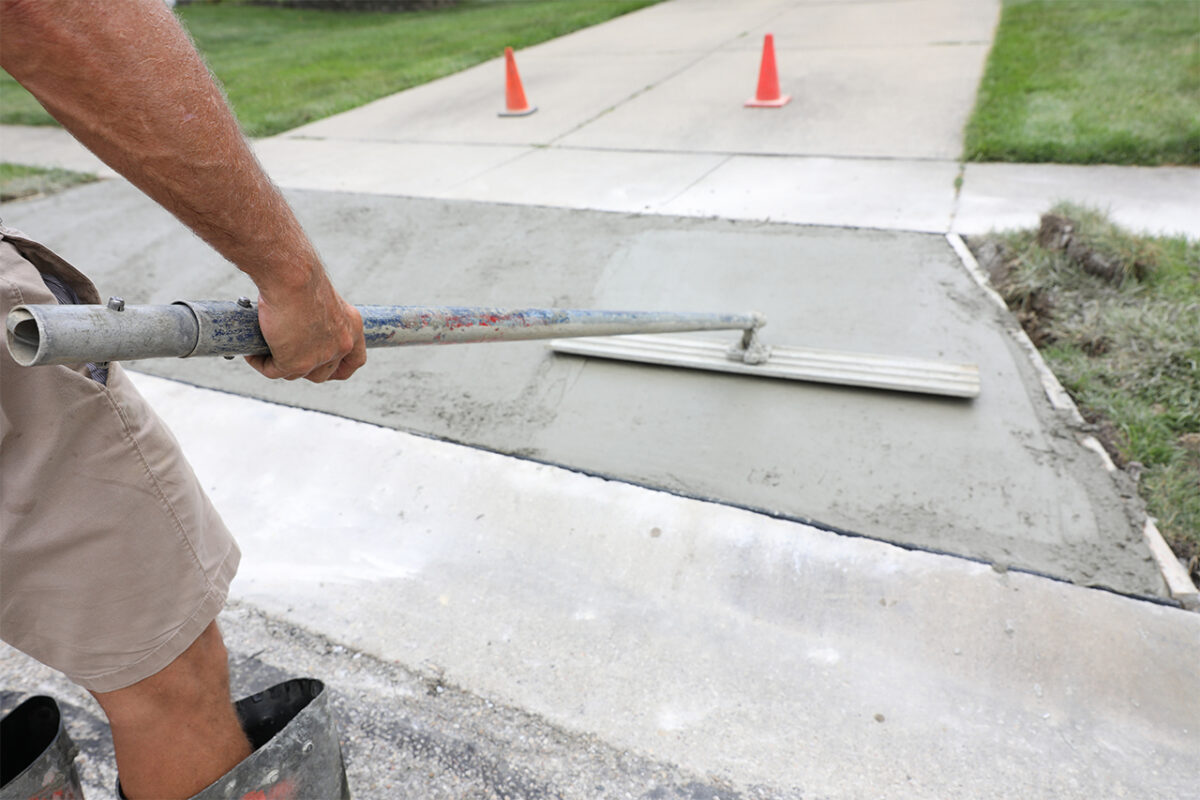The Ultimate Guide to Concrete Driveway Installation: What Homeowners Need to Know

A concrete driveway is more than just a place to park your car it’s a significant investment that adds value, durability, and curb appeal to your home. However, understanding the process of Concrete Driveway Installation can be overwhelming for homeowners. From selecting the right materials to understanding the costs and ensuring proper maintenance, numerous factors must be considered. This guide aims to walk you through everything you need to know about installing a concrete driveway, ensuring you make informed decisions every step of the way.
Understanding Concrete Driveway Installation
Concrete driveway installation is a complex process that requires careful planning and execution. It begins with the preparation of the site, which involves clearing the area of any debris and ensuring a stable base for the concrete. The ground needs to be leveled and compacted to avoid future issues such as cracking or sinking. After this, a wooden or metal framework is constructed to shape the driveway and contain the concrete while it sets.
The next step is mixing and pouring the concrete. Getting the right mix of cement, water, and aggregate (usually sand and gravel) is crucial to ensure the driveway’s strength and durability. Once poured, the concrete must be leveled and smoothed out, which requires skill and experience to avoid imperfections. Proper curing is also essential, as this process allows the concrete to reach its full strength. Typically, it takes about a week for the concrete to cure enough to support weight, but complete curing can take up to a month.
Choosing the Right Materials and Mix
One of the most important decisions in concrete driveway installation is selecting the appropriate materials and mix. The quality of the concrete mix directly impacts the driveway’s durability and longevity. A standard mix for driveways consists of one part cement, two parts sand, and four parts gravel, with water added to achieve the right consistency. However, depending on your location and the expected load on the driveway, you might need a stronger mix. For example, in colder climates, adding air-entraining agents to the mix can help prevent damage from freeze-thaw cycles.
It’s also essential to consider the thickness of the concrete. For a typical residential driveway, a thickness of 4-6 inches is standard. However, if you plan to park heavy vehicles like RVs or trucks, you may need a thicker slab to support the extra weight. Additionally, using reinforcing materials like rebar or wire mesh can enhance the concrete’s strength, reducing the risk of cracking over time.

The Importance of Proper Drainage
Proper drainage is a critical aspect of concrete driveway installation that is often overlooked. Without adequate drainage, water can accumulate on the driveway’s surface, leading to cracks and other damage over time. During installation, ensure that the driveway is slightly sloped to direct water away from your home and towards the street or a drainage system. Installing a drainage channel or a French drain along the edges of the driveway can also help manage water runoff effectively.
In areas prone to heavy rainfall, considering permeable concrete, which allows water to pass through the surface and be absorbed into the ground, can be a smart investment. This not only helps with drainage but also reduces the environmental impact by minimizing runoff.
Cost Considerations and Budgeting
Understanding the costs involved in concrete driveway installation is crucial for budgeting and planning. The total cost can vary significantly depending on factors like the size of the driveway, the quality of materials used, and any additional features such as decorative finishes or special drainage systems.
On average, homeowners can expect to pay between $4 to $10 per square foot for a basic concrete driveway installation. This price includes materials, labor, and equipment. However, if you opt for higher-end materials or complex designs, the cost can rise considerably. For instance, stamped concrete, which mimics the appearance of stone or brick, can cost between $8 to $18 per square foot.
It’s also important to factor in long-term maintenance costs. While concrete driveways are durable, they still require periodic sealing and repairs to maintain their appearance and functionality. Sealing the driveway every two to three years can help prevent stains and prolong its lifespan, while minor cracks should be repaired promptly to avoid more extensive damage.
Maintaining Your Concrete Driveway
Once your concrete driveway is installed, proper maintenance is essential to keep it looking great and functioning well for years to come. Regular cleaning is the first step in maintaining your driveway. Use a pressure washer or a garden hose with a stiff brush to remove dirt, debris, and stains. For tougher stains like oil or grease, a degreaser or a specialized concrete cleaner may be needed.
In addition to cleaning, sealing your driveway is vital to protect it from the elements. Concrete sealers create a protective layer that prevents water, oil, and other substances from penetrating the surface. Applying a sealer every few years can significantly extend the life of your driveway and keep it looking new.
It’s also important to address any cracks or damage as soon as they appear. Small cracks can often be repaired with a concrete patching compound, while more significant damage might require professional repair. Ignoring cracks can lead to more extensive damage, as water can seep into the concrete and cause further deterioration.
Common Mistakes to Avoid
When it comes to concrete driveway installation, there are several common mistakes that homeowners should avoid. One of the biggest mistakes is skimping on the preparation work. A poorly prepared base can lead to a weak and unstable driveway, prone to cracking and sinking. Always ensure the ground is properly leveled, compacted, and free of debris before pouring the concrete.
Another common mistake is not allowing enough time for the concrete to cure properly. While it might be tempting to start using your new driveway as soon as the concrete appears solid, it’s essential to wait until it has fully cured. Driving on the concrete too soon can cause permanent damage, including cracks and imprints.
Lastly, neglecting maintenance is a sure way to shorten the lifespan of your concrete driveway. Regular cleaning, sealing, and prompt repairs are necessary to keep your driveway in top condition. By staying on top of maintenance, you can avoid costly repairs and ensure your driveway remains a valuable asset to your home.
Conclusion
Investing in a concrete driveway can significantly enhance your home’s curb appeal and functionality. However, understanding the process of Concrete Driveway Installation is crucial to ensuring a successful and long-lasting result. From selecting the right materials to proper installation techniques and ongoing maintenance, each step plays a vital role in the durability and appearance of your driveway. By following this guide and avoiding common pitfalls, you can enjoy a beautiful and durable concrete driveway for many years to come.









